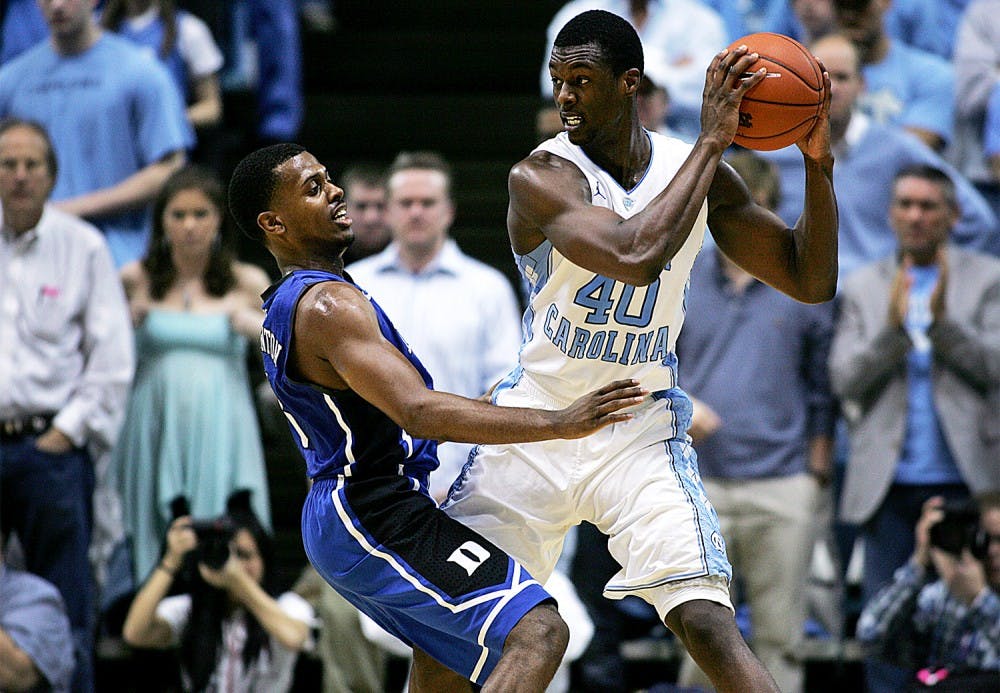Harrison Barnes is about to get paid.
On Monday, the former UNC forward was named to USA Basketball’s 12-man roster for the 2016 Olympics in Rio de Janeiro. And Friday marks the first day of NBA free agency — where Barnes could command a maximum contract averaging over $25 million per season.
But is he worth it?
At 6-foot-8 and 225 pounds, Barnes fits the mold of the quintessential NBA small forward — and at times he has played the part. Widely considered the top high school prospect in 2010, the Iowa native wowed with his polished offensive game and high basketball IQ, drawing interest as a future No. 1 selection in the NBA Draft. At UNC, Barnes continued to flash signs of scoring brilliance, earning All-America honors in his sophomore season and leading the Tar Heels to two straight Elite Eight appearances.
But shooting inconsistencies plagued the potential top pick. His excellent offensive arsenal was on full display at North Carolina — as was his elite court awareness and scoring mentality — but Barnes’ inability to create his own shot often mitigated his impact. And without gaudy rebounding or assist totals, scouts feared that the one-time superstar was a one-dimensional scorer who occasionally struggled to score.
With the No. 7 pick in the 2012 NBA Draft, the Golden State Warriors took a chance. With his impressive spot-up shooting ability and positional versatility, Barnes immediately found a role with the team and started 81 games in his rookie season alongside Stephen Curry and Klay Thompson in one of the NBA’s most potent lineups. But when Coach Mark Jackson relegated the small forward to a sixth-man role the following year, Barnes struggled to create his own offense as the leader of the second unit — posting career lows in field-goal percentage (39.9) and 3-point percentage (34.7).
After Steve Kerr took the reins in 2014-15, Barnes started all 82 games and saw his field-goal percentage (48.2) and 3-point percentage (40.5) reach career-high marks — thanks in part to more assisted field goals and less time with the ball in his hands. And in the 2015 NBA Finals, Kerr utilized Barnes’ length and shooting stroke at power forward in a center-less, “small-ball” lineup that earned Golden State its first title in 40 years.
But this past season, Barnes’ limitations often overshadowed his strengths. The small forward once again settled into his role as a catch-and-shoot specialist, spotting up more than ever before. And with his record-setting backcourt teammates drawing the defense’s attention, 21.5 percent of Barnes’ 3-point attempts were wide open — significantly more than any other Warrior in the rotation. But once again, inconsistency reared its ugly head, as Barnes hit a disappointing 42.6 percent of his uncontested 3-pointers and 38.3 percent of all 3-point shots.
This was never more apparent than in the 2016 NBA Finals, when the Cleveland Cavaliers left Barnes wide open along the perimeter nearly 30 percent of the time. But time and time again, he missed — including a 2-for-22 stretch from the field in Games 5 and 6 — to finish the series shooting 31 percent from beyond the arc and 35.2 percent overall. And while Barnes’ shooting touch helped Golden State in its record-setting 73-win campaign, his struggles down the stretch arguably cost his team a championship and hurt his offseason value.



